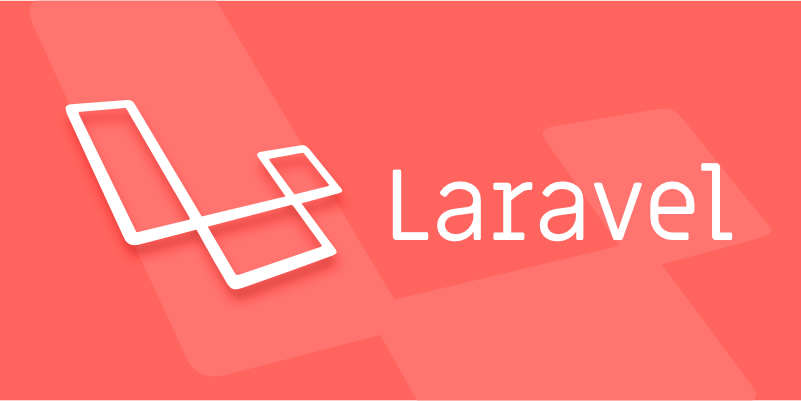Choose a multi-tenant architecture based on isolation and scalability needs; 2. Identify tenants via subdomain or domain using middleware to resolve and store the current tenant; 3. Configure dynamic database connections by setting tenant-specific database configurations at runtime and assigning them to models; 4. Automate database provisioning by creating a new database and running migrations when a tenant registers; 5. Organize tenant-specific migrations in a dedicated folder and use a base model with the tenant connection; 6. Secure data access by enforcing connection usage, avoiding global cache leaks, and applying policies; 7. Handle queue jobs and scheduled tasks by re-resolving the tenant context within jobs to maintain data isolation; 8. Optionally, use Spatie Laravel Multitenancy package to simplify tenant management, including automatic context switching and queue isolation; always test thoroughly, avoid trusting user input, use scoped caching, separate filesystem disks, and isolated test environments to ensure robustness and security of the multi-tenant application.

Building a multi-tenant application in Laravel means serving multiple clients (tenants) from a single codebase, each with isolated data. There are different approaches—single database with tenant identifiers, separate databases per tenant, or schema-based isolation. The choice depends on your scalability, security, and maintenance needs.

Here’s how to build a solid multi-tenant app in Laravel using a common and scalable approach: one database per tenant with dynamic database connections.
1. Choose Your Multi-Tenant Architecture
Before coding, decide on your tenancy model:

Single Database (Row-level isolation)
All tenants share one database; data is separated by atenant_idcolumn.
? Simple to manage
? Risk of data leakage if queries aren’t scoped properly-
Multiple Databases (Per tenant)
Each tenant has their own database.
? Strong data isolation
? More complex setup and backup strategy
PostgreSQL Schemas (Hybrid)
One database, but each tenant gets its own schema.
? Good balance of isolation and manageability
? Limited to PostgreSQL
For this guide, we’ll use multiple databases (one per tenant), which is ideal for SaaS apps needing strong separation.
2. Set Up Tenant Identification
You need to identify the tenant on every request—usually via subdomain or domain.
Example: Identify Tenant by Subdomain
// Middleware: ResolveTenant.php
public function handle($request, Closure $next)
{
$host = $request->getHost(); // tenant1.yourapp.com
$subdomain = explode('.', $host)[0];
$tenant = Tenant::where('subdomain', $subdomain)->first();
if (! $tenant) {
abort(404, 'Tenant not found');
}
// Store tenant in request or use a global accessor
app()->instance('currentTenant', $tenant);
return $next($request);
}Register this middleware in app/Http/Kernel.php as a global or route middleware.
3. Configure Dynamic Database Connections
Laravel allows runtime database connection switching.
Add Dynamic Connection
In your middleware or service provider:
Config::set("database.connections.tenant", [
'driver' => 'mysql',
'host' => $tenant->db_host,
'database' => $tenant->db_name,
'username' => $tenant->db_username,
'password' => $tenant->db_password,
// ... other options
]);Then, use it:
DB::connection('tenant')->table('users')->get();Or set Eloquent models to use it:
class Customer extends Model
{
protected $connection = 'tenant';
}4. Automate Database Provisioning
When a new tenant signs up, create their database and run migrations.
// In tenant registration logic
$tenant = new Tenant([
'name' => $request->name,
'subdomain' => $request->subdomain,
// database credentials or generate them
]);
$tenant->save();
// Create database
DB::statement("CREATE DATABASE {$tenant->db_name}");
// Configure connection
Config::set('database.connections.tenant', $this->getConnectionConfig($tenant));
// Run migrations
Artisan::call('migrate', [
'--database' => 'tenant',
'--path' => 'database/migrations/tenant'
]);? Use a service class to encapsulate tenant setup logic.
5. Organize Tenant-Specific Migrations and Models
Keep tenant-specific migrations separate:
/database/migrations/tenant/
create_customers_table.php
create_invoices_table.phpUse a base model for tenant models:
abstract class TenantModel extends Model
{
protected $connection = 'tenant';
}6. Secure Data Access
Always ensure models and queries use the correct connection. Never mix tenant and system data.
- Use middleware to resolve tenant early.
- Avoid caching tenant data globally unless scoped.
- Use policies and scopes to prevent accidental access.
7. Handle Queue Jobs and Scheduled Tasks
When using queues or schedule:run, Laravel may lose tenant context. You must re-resolve the tenant.
For queued jobs:
class ProcessInvoice
{
protected $tenant;
public function __construct($tenant, $data)
{
$this->tenant = $tenant;
$this->data = $data;
}
public function handle()
{
// Reconnect to tenant DB
Config::set('database.connections.tenant', $this->tenant->dbConfig());
DB::setDefaultConnection('tenant');
// Now proceed
}
}Or use packages like Spatie Laravel-Multitenancy to automate context preservation.
8. (Optional) Use a Package
Instead of building from scratch, consider:
- Spatie Laravel Multitenancy
Handles tenant switching, jobs, caching, and more. Highly recommended.
With Spatie:
// Auto-switch tenant $tenant->makeCurrent(); // Everything from here uses tenant DB User::all(); // from tenant DB // Switch back $tenant->forgetCurrent();
It also supports teams, domains, and queue isolation.
Final Tips
- ? Test thoroughly—especially tenant switching and fallbacks.
- ? Never trust user input for tenant resolution.
- ? Use database seeds for tenant onboarding.
- ? Consider using separate filesystem disks per tenant (e.g., S3 prefixes).
- ? Run tests in isolation (e.g., use separate test databases).
Basically, building multi-tenant Laravel apps is manageable once you isolate tenant resolution, database switching, and provisioning. Start simple, then scale with tools like Spatie’s package when needed.
The above is the detailed content of How to build a multi-tenant application in Laravel?. For more information, please follow other related articles on the PHP Chinese website!

Hot AI Tools

Undress AI Tool
Undress images for free

Undresser.AI Undress
AI-powered app for creating realistic nude photos

AI Clothes Remover
Online AI tool for removing clothes from photos.

Clothoff.io
AI clothes remover

Video Face Swap
Swap faces in any video effortlessly with our completely free AI face swap tool!

Hot Article

Hot Tools

Notepad++7.3.1
Easy-to-use and free code editor

SublimeText3 Chinese version
Chinese version, very easy to use

Zend Studio 13.0.1
Powerful PHP integrated development environment

Dreamweaver CS6
Visual web development tools

SublimeText3 Mac version
God-level code editing software (SublimeText3)
 Creating Custom Validation Rules in a Laravel Project
Jul 04, 2025 am 01:03 AM
Creating Custom Validation Rules in a Laravel Project
Jul 04, 2025 am 01:03 AM
There are three ways to add custom validation rules in Laravel: using closures, Rule classes, and form requests. 1. Use closures to be suitable for lightweight verification, such as preventing the user name "admin"; 2. Create Rule classes (such as ValidUsernameRule) to make complex logic clearer and maintainable; 3. Integrate multiple rules in form requests and centrally manage verification logic. At the same time, you can set prompts through custom messages methods or incoming error message arrays to improve flexibility and maintainability.
 Working with pivot tables in Laravel Many-to-Many relationships
Jul 07, 2025 am 01:06 AM
Working with pivot tables in Laravel Many-to-Many relationships
Jul 07, 2025 am 01:06 AM
ToworkeffectivelywithpivottablesinLaravel,firstaccesspivotdatausingwithPivot()orwithTimestamps(),thenupdateentrieswithupdateExistingPivot(),managerelationshipsviadetach()andsync(),andusecustompivotmodelswhenneeded.1.UsewithPivot()toincludespecificcol
 Sending different types of notifications with Laravel
Jul 06, 2025 am 12:52 AM
Sending different types of notifications with Laravel
Jul 06, 2025 am 12:52 AM
Laravelprovidesacleanandflexiblewaytosendnotificationsviamultiplechannelslikeemail,SMS,in-appalerts,andpushnotifications.Youdefinenotificationchannelsinthevia()methodofanotificationclass,andimplementspecificmethodsliketoMail(),toDatabase(),ortoVonage
 Understanding Dependency Injection in Laravel?
Jul 05, 2025 am 02:01 AM
Understanding Dependency Injection in Laravel?
Jul 05, 2025 am 02:01 AM
Dependency injection automatically handles class dependencies through service containers in Laravel without manual new objects. Its core is constructor injection and method injection, such as automatically passing in the Request instance in the controller. Laravel parses dependencies through type prompts and recursively creates the required objects. The binding interface and implementation can be used by the service provider to use the bind method, or singleton to bind a singleton. When using it, you need to ensure type prompts, avoid constructor complications, use context bindings with caution, and understand automatic parsing rules. Mastering these can improve code flexibility and maintenance.
 Strategies for optimizing Laravel application performance
Jul 09, 2025 am 03:00 AM
Strategies for optimizing Laravel application performance
Jul 09, 2025 am 03:00 AM
Laravel performance optimization can improve application efficiency through four core directions. 1. Use the cache mechanism to reduce duplicate queries, store infrequently changing data through Cache::remember() and other methods to reduce database access frequency; 2. Optimize database from the model to query statements, avoid N 1 queries, specifying field queries, adding indexes, paging processing and reading and writing separation, and reduce bottlenecks; 3. Use time-consuming operations such as email sending and file exporting to queue asynchronous processing, use Supervisor to manage workers and set up retry mechanisms; 4. Use middleware and service providers reasonably to avoid complex logic and unnecessary initialization code, and delay loading of services to improve startup efficiency.
 Managing database state for testing in Laravel
Jul 13, 2025 am 03:08 AM
Managing database state for testing in Laravel
Jul 13, 2025 am 03:08 AM
Methods to manage database state in Laravel tests include using RefreshDatabase, selective seeding of data, careful use of transactions, and manual cleaning if necessary. 1. Use RefreshDatabasetrait to automatically migrate the database structure to ensure that each test is based on a clean database; 2. Use specific seeds to fill the necessary data and generate dynamic data in combination with the model factory; 3. Use DatabaseTransactionstrait to roll back the test changes, but pay attention to its limitations; 4. Manually truncate the table or reseed the database when it cannot be automatically cleaned. These methods are flexibly selected according to the type of test and environment to ensure the reliability and efficiency of the test.
 Choosing between Laravel Sanctum and Passport for API authentication
Jul 14, 2025 am 02:35 AM
Choosing between Laravel Sanctum and Passport for API authentication
Jul 14, 2025 am 02:35 AM
LaravelSanctum is suitable for simple, lightweight API certifications such as SPA or mobile applications, while Passport is suitable for scenarios where full OAuth2 functionality is required. 1. Sanctum provides token-based authentication, suitable for first-party clients; 2. Passport supports complex processes such as authorization codes and client credentials, suitable for third-party developers to access; 3. Sanctum installation and configuration are simpler and maintenance costs are low; 4. Passport functions are comprehensive but configuration is complex, suitable for platforms that require fine permission control. When selecting, you should determine whether the OAuth2 feature is required based on the project requirements.
 Implementing Database Transactions in Laravel?
Jul 08, 2025 am 01:02 AM
Implementing Database Transactions in Laravel?
Jul 08, 2025 am 01:02 AM
Laravel simplifies database transaction processing with built-in support. 1. Use the DB::transaction() method to automatically commit or rollback operations to ensure data integrity; 2. Support nested transactions and implement them through savepoints, but it is usually recommended to use a single transaction wrapper to avoid complexity; 3. Provide manual control methods such as beginTransaction(), commit() and rollBack(), suitable for scenarios that require more flexible processing; 4. Best practices include keeping transactions short, only using them when necessary, testing failures, and recording rollback information. Rationally choosing transaction management methods can help improve application reliability and performance.







